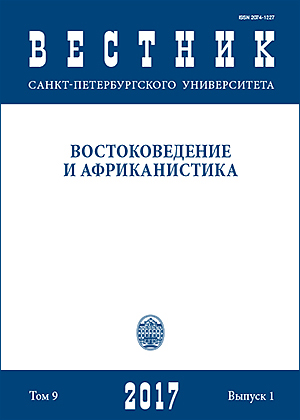Тоска по родине, насилие и проституция: амхарская литература о трудовой миграции в страны Персидского залива
DOI:
https://doi.org/10.21638/11701/spbu13.2017.106Аннотация
Ежемесячно тысячи людей уезжают из Эфиопии, чтобы работать в странах Персидского залива. Эта вовлеченность эфиопов в трудовую миграцию отражается на их современной культуре. О миграции слагаются стихи, снимаются фильмы. В статье я рассматриваю, каким образом миграция описывается в художественной литературе. Оба произведения, на которых базируется анализ, воспроизводят негативный дискурс о миграции, основанный на концепте сыддэт (амх. «миграция, изгнание»). Страдания эфиопов за рубежом являются главной идеей произведения, и никто из героев книг не отражает пример удачной миграции. На мой взгляд, в амхарских произведениях о миграции конструируется новая эфиопская идентичность в глобальном мире, которая основана на идее общей национальной трагедии. Хотя авторы часто являются представителями диаспоры, произведения, построенные на идее сыддэт, востребованы внутри страны, так что «изгнание» становится важнейшим элементом эфиопской идентичности.
Ключевые слова:
трудовая миграция, дискурс о миграции, национализм, Эфиопия, художественная литература
Скачивания
Библиографические ссылки
References
Загрузки
Опубликован
Как цитировать
Выпуск
Раздел
Лицензия
Статьи журнала «Вестник Санкт-Петербургского университета. Востоковедение и африканистика» находятся в открытом доступе и распространяются в соответствии с условиями Лицензионного Договора с Санкт-Петербургским государственным университетом, который бесплатно предоставляет авторам неограниченное распространение и самостоятельное архивирование.





